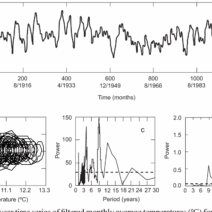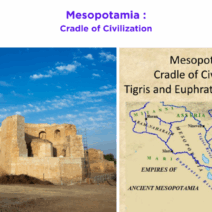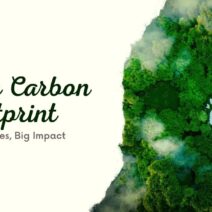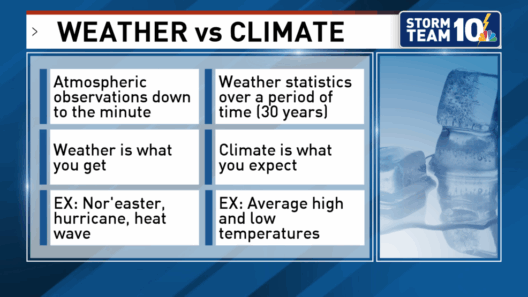The ocean, that vast and enigmatic expanse, stands as both a mirror to the Earth’s health and a barometer of human activity. Its melancholic blues and vibrant greens are reminiscent of a painter’s palette, but beneath its surface lies a tempest of changes wrought by global warming—a transformation as profound as the shifting of tectonic plates. As we traverse this undulating tableau, we must confront the stark reality that our seas are in flux.
To understand the impact of global warming on our oceans, we must first acknowledge their significance. Covering over 70% of our planet’s surface, oceans act as a formidable climate regulator. They sequester heat, absorb carbon dioxide, and shelter an array of biota. Yet, as greenhouse gas emissions rise and temperatures soar, the seas are beset by multifaceted alterations, setting in motion a cascade of environmental consequences.
One of the most salient and alarming changes is the phenomenon of ocean warming. The increase in sea temperatures has become akin to an invisible blanket encasing our world. This thermal uptick not only endangers marine life but also disrupts entire ecosystems. Coral reefs—often termed the “rainforests of the sea”—are particularly vulnerable. They rely on a symbiotic relationship with zooxanthellae, tiny algae that provide them with nourishment through photosynthesis. When waters become excessively warm, these vital partners are expelled, leading to coral bleaching. The vibrant inner worlds of corals, once teeming with colour and life, now bear the scars of stress, leaving them vulnerable to disease and mortality.
Moreover, the heated waters catalyze more potent storms. Hurricanes and typhoons thrive in warm ocean conditions, and the accelerated evaporation rates of a warming ocean lead to increased atmospheric moisture. This creates a volatile environment where storms not only become more frequent but also more intense, wreaking havoc on coastal communities. The relentless dance of wind and water pushes the boundaries of maritime ecosystems, reshaping coastlines and endangering human settlements.
As the temperature of the oceans rises, the intricate balance of marine ecosystems is further confounded by ocean acidification. When carbon dioxide is absorbed by seawater, it reacts to form carbonic acid, leading to a decrease in pH levels. This unseen menace is particularly devastating for calcifying organisms such as mollusks, crabs, and corals. The chemical alterations in seawater hinder these creatures’ ability to build their shells and skeletons, prompting an existential crisis for species crucial to the marine food web. The implications of this chain reaction echo through the oceans, affecting not only marine biodiversity but also the livelihoods of millions who depend on fishing and aquaculture.
The flux of our oceans prompts reflection on another critical aspect: rising sea levels. The dual culprits of glacial melt and thermal expansion are akin to dual engines propelling water toward coastlines. As polar ice sheets and glaciers recede under the relentless assault of warmth, glacial streams and rivulets birth torrents that contribute to the swelling seas. Similarly, the expansion of warmer water results in rising tides that submerge low-lying areas and intensify flooding events. Coastal cities—once bastions of human achievement—now stand as frontiers in the battle against nature’s augmenting tide.
The poetically named “Great Pacific Garbage Patch” stands as an unsettling reminder of our human tendency to neglect the ramifications of our consumption patterns. This colossal accumulation of marine debris, primarily plastics, serves as a bellwether for our disregard for ocean health. As the seas rise and temperatures climb, these pollutants break down into microplastics—ubiquitous remnants that infiltrate the food chain. Marine creatures unknowingly consume these particles, raising concerns about bioaccumulation that may ultimately affect human health. The very fabric of the ocean, once unyielding, is now frayed, entangled with our detritus.
In navigating the perturbations of our oceans, we must also recognize the profound effects on marine life and biodiversity. Species migration has become a prevalent trend; as temperatures shift, many marine organisms are compelled to seek cooler waters. This shift wreaks havoc on well-established ecosystems, disrupting predator-prey relationships and altering food sources. The once-familiar chorus of marine life is changing, as species such as fish seek refuge in the chilly embrace of the poles, while others face the harrowing prospect of extinction. The great migration of the ocean’s denizens paints a stark picture of an ecosystem abruptly thrust into a state of flux.
Despite these challenges, the ocean’s resilience shines through. Adaptive mechanisms within marine species reveal an ocean that possesses the capacity for renewal. Some coral species exhibit increased tolerance to higher temperatures, suggesting potential pathways to survival. Marine conservation efforts are underway to sustain fisheries and rehabilitate severely impacted habitats. Globally, organizations are championing the call to protect marine reserves, safeguarding vital ecosystems against overfishing and pollution, akin to how a gardener tends to fragile blooms.
Ultimately, the seas are both a cautionary tale and a canvas for hope. As global warming reshapes our oceans, it also invites us to reconsider our relationship with nature. The call to action is clear: we must engage in stewardship, advocating for sustainable practices that mitigate climate change and preserve the fragile tapestry of marine life. In this epoch of environmental flux, the fate of our oceans—and, by extension, humanity—hangs in the balance. Let us heed the clarion call to protect our waterways, securing a flourishing future for the generations that will inherit the Earth. The ocean is, indeed, in flux—but it remains our shared responsibility to navigate this tide effectively.








